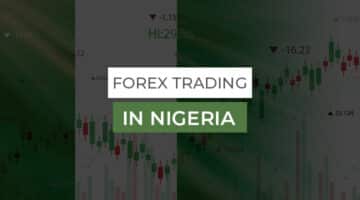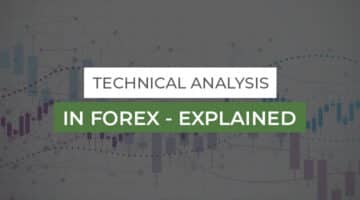What is NAS100 (NASDAQ 100)?

In this article
What is NAS100, NASDAQ 100, or NDX100, a US-focused equity index made up of the 100 largest non-financial stocks by market capitalization listed on the NASDAQ stock exchange?
The index is also known as the US Tech 100 due to the prevalence of tech stocks in the index – NASDAQ Financial stocks are included in a separate index, the NASDAQ Financial 100.
NAS100 is not to be confused with the NASDAQ Composite, an index composed of every stock listed on the NASDAQ exchange.
History of the NASDAQ exchange
The NASDAQ exchange is the second-largest stock exchange in the world behind the New York Stock Exchange (NYSE).
The exchange was founded more than 50 years ago, and its name derives from the founding body, the National Association of Securities Dealers (NASD).
The NASD divested its remaining interests in the NASDAQ exchange in 2006, with the exchange then becoming a publicly-traded company.
The NASD changed its name the following year, becoming the self-regulatory body FINRA (Financial Industry Regulatory Authority). At the same time, the exchange held on to the NASDAQ name long ingrained in the public’s minds.
Originally just a quotation system with no execution functionality, the NASDAQ exchange was the world’s first electronic stock market and the first online stock market, a logical home for the world’s greatest tech stocks.
Launch of the NAS100
The NASDAQ-100 index was launched in 1985 alongside the NASDAQ Financial Index. NASDAQ exchange was looking to compete with the much larger and older NYSE and Standard & Poor’s S&P500 index. These new products were the first step on that journey, allowing for creating a suite of futures and derivatives markets, further fuelling the exchange and index growth.
With rapid advances in technology over the coming decades and an associated explosion of tech stocks through the dot com bubble and beyond, the index has gone from strength to strength, returning a compound annual growth rate of 13.6% per year since inception without even factoring in dividends.
NASDAQ composite index
The NAS100 comprises 102 securities issued by the 100 largest non-financial stocks from the NASDAQ exchange. Pluck a big tech name out of the air; chances are it’s a part of the index – Activision Blizzard, Alphabet (Google), AMD, Amazon – and that’s just the A’s. As well as these tech behemoths, there is also a range of other companies covering Industrials right through to Transport and Media.
The index is re-ranked and rebalanced every year in an annual reports review process, though companies can also drop out at any time if their weight drops below 0.1%, with the largest not-yet-indexed company taking the dropped stock’s place.

How Is The NASDAQ 100 Calculated?
There are 102 shares in the NASDAQ 100. In some companies, there are two share classes – for instance; Alphabet has shares in Class A and Class C.
An index is calculated based on the Foreign exchange market capitalization of its constituents. Using the aggregate value of each security’s weights in the index, the value of the index can be found by multiplying its last base price by an index divisor. A company’s weight in the index cannot exceed 24%.
Tip:
An index divisor gives a price-weighted stock market index its nominal value.
What are the NASDAQ 100 trading hours?
There are the following trading hours on the NASDAQ:
- Opens: 9:30 AM (ET.)
- Closes: 4:00 PM (ET.)
PreMarket hours
In the premarket, trading occurs from 4:00 AM to 9:30 AM (ET), and in the aftermarket, from 4:00 PM to 8:00 PM (ET).
What does the performance of the NASDAQ 100 tell us?
For the past decade, the NASDAQ 100 has outperformed the S&P 500. Additionally, the S&P 500 offers greater diversification than its peers. This is not only because the index has 500 companies rather than 100 but also because it does not have a disproportionately large proportion of companies in one sector.
The NASDAQ 100 remains one of the best tools for tracking the performance of US technology companies, even with those shortcomings. It may also be advantageous for some investors to buy an index rather than individual components.
In the NASDAQ, rules prevent one company from gaining too much weight, which is a good thing.
What are the top 10 companies listed in the NASDAQ 100?
NASDAQ 100 index’s top ten companies are:
- Apple
- Microsoft
- Amazon
- Tesla
- NVIDIA
- Alphabet (Class C)
- Alphabet (Class A)
- Meta (formerly known as Facebook)
- Adobe
- Netflix
Ten heavyweights make up more than half of the total index share weights. Indeed, some investors don’t mind that just ten companies heavily dominate the index, but others prefer a more balanced index.
What factors affect the NASDAQ 100 price?
Besides external fundamentals, stock performance and the performance of the NASDAQ 100 are key influencers of its price.
Stock performance
The performance and price of an individual stock can vary by factors like earnings reports, key appointments, and new product launches. These factors can also affect the overall index price. Due to the weighting system, the price of a broad index is more likely to be affected by events affecting its largest constituents.
Fundamental factors
There are higher levels of economic activity in the US, which can directly impact the index and change interest rates and monetary policy.
How are the NASDAQ 100 companies selected?
Companies can become members of the NASDAQ 100 index by meeting several criteria:
- A common stock, ordinary share, or tracking stock must meet these criteria
- NASDAQ must list the stock
- The index is open only to non-financial companies
- Ordinary shares of the stock must trade on an average of 200K per Day
- Trading must have taken place for at least three months in a row
- Every December, NASDAQ picks the index constituents. Quarterly rebalancing occurs in March, June, September, and December.
NASDAQ 100 trading strategies
In the same way as trading other instruments, the NASDAQ100 is traded similarly. On the other hand, trading shares does not involve specific company earnings reports. To achieve this, traders should employ strategies like these:
Swing trading
In swing trading, positions open according to market trends. A Swing Trader relies on technical analysis trading tools, such as charts, to predict the direction of an underlying instrument’s price movement before opening a position.
A trader may choose to hold a position for a medium period but can close it at any time if s/he wishes.
Day trading
A day trade is a trade that involves opening and closing a position on the same Day. A trader, for instance, opens a position in the hopes that it will move in a favourable direction during the Day. When trading ends that Day, they close the position and either make a profit or lose more money.
Position trading
Trading positions refer to holding open positions for a long period, such as weeks or months, hoping they will rise in value.
How to trade the NASDAQ 100
As stock markets generally trend up over time and for prolonged periods, the go-to Forex trading strategy for tracking stocks and other indices is trend-following.
A trend-following strategy seeks to capitalise on sustained momentum and long-term trends in markets, going with the crowd rather than betting against it.
Trend-following strategies have a distinct advantage over passive buy-and-hold investing as they will not leave you holding bags of common stocks when the market eventually turns bearish.
If you start Forex trading the NAS100, a buy-side-only trend-following strategy is the simplest approach.
Once you have perfected this, you may also want to explore participating in downward trends by incorporating shorting into your strategy. Alternatively, you can leave this site out and take a vacation during NDX100 bear markets.
Moving averages, Bollinger bands, and Keltner channels are some indicators you may want to research and incorporate into your NASDAQ 100 trend-following strategy. As trend-following is a long-term approach, the daily chart is likely a good place to start on your search for an edge.
One of the biggest advantages of a daily trend-following strategy is the small amount of time required to execute. You can trade such a strategy in just 5 minutes per Day, as you will only ever be trading at the start of a new trading day. This strategy is the perfect solution for traders with competing work, family, or education commitments.
5 reasons why investors trade the NASDAQ 100
Technology sector stocks dominate the NASDAQ 100, and the following are why investors choose NASDAQ futures over NASDAQ stocks.
Day trade the tech sector with little capital
If you’re financially bound, NASDAQ futures provide a unique opportunity. To succeed in day trading, one must have at least a balance of $25,000 to qualify.
Availability of leverage and liquid trading
NASDAQ futures can be traded with minimal capital and command substantial contract values. Furthermore, futures offer superior leverage compared to NASDAQ exchange-traded funds (ETFs), which are also highly leveraged.
Nevertheless, increased leverage carries significant risk. Moreover, futures offer quick trade execution because of their high liquidity.
Use a single instrument to trade a whole sector.
NASDAQ futures traders can trade across a wide range of technology sectors, offering a diversified portfolio of stocks within the same asset class. The ability to trade and track one futures contract simultaneously with several different stocks simplifies the trading process.
Trade throughout
The Day NASDAQ futures are available 24 hours a day, six days a week, allowing traders to maximize their profit potential. Furthermore, trading positions can be tracked whenever a major news release or event occurs.
Easily trade both market sides.
Futures traders can trade both long and short sides without short-selling restrictions or uptick regulation like stock traders do. Traders who predict NASDAQ falling prices may sell positions before going short. In the futures market, investors can trade in two ways.
Top tips for how to trade the NASDAQ 100
Trading strategies are similar to those used in investing in futures markets. Trading requires the use of a proven strategy that is suited to the current market condition. A successful trader adheres to guidelines and principles that comprise a successful trading strategy.
Use technical analysis to trade index.
This analysis can serve to analyze charts as well as to search for buy and sell signals. Indices help recognize current market trends, possible retracement patterns, and shifts in sentiment.
Trading indicators can be extremely confusing, so traders need to pick comfortable indicators that are easy to understand. Using indicators is not a fail-safe strategy. One should manage high risk appropriately by limiting open trade exposure to less than 5%, using the proper leverage, and following a risk-reward ratio. Do not risk money on complex instruments you cannot afford to lose for personal circumstances. Always seek independent financial advice.
Using fundamental analysis to trade the NASDAQ 100
The NASDAQ 100 index’s price is affected by several fundamental factors. To understand these variables’ impact on the index, traders must be well informed. Here are some of the biggest NASDAQ 100 index movers:
- Changing monetary policy positions by the commercial and investment banks can negatively affect NASDAQ.
- Several of the largest NASDAQ companies, including Apple, Microsoft, Cisco Systems, and Amazon, influence the price.
- Trade barriers and tariffs can affect the largest companies in the index in case of a Foreign currency war or trade war.
- Releases of economic data, including interest rates, consumer prices, employment, and GDP, can give insight into the federal exchange rules that will be implemented.
Where can I trade the NAS100 from South Africa?
As the NASDAQ is the second-largest stock exchange in the world and the NAS100 is one of the most actively traded indices, opportunities to trade the market abound. However, Forex trading the market directly from South Africa may be difficult if you aren’t already set up with a US equities brokerage.
Contracts for difference are a highly accessible derivative product based on various indices and other markets, including the NASDAQ 100.
These products allow savvy Forex traders and investors to speculate on moves in underlying markets without purchasing the common stock or index. As such, fees are generally highly competitive.
Another advantage of CFD trading is that it is readily available to leverage, allowing you to trade much larger sizes than you would be able to trade Forex in the Forex market, supercharging your potential returns and losses.
With a CFD broker, you should be able to begin trading the NASDAQ 100 with a very small amount of capital, putting your new trend-following strategy to the test in live market conditions while limiting your risks involved in trading through this learning process.
Once your strategy has proven itself and you are well aware of the downside risks, you can scale up your NAS100 trading on-demand with the power of leverage.
If you’d like to start trading Forex and NAS100 trends on a different currency, a reliable and trusted South African CFD broker like Trade Nation is the logical place to start.
Open a live trading account today and capture the next big trend in big tech!
Jason Morgan is an experienced forex analyst and writer with a deep understanding of the financial markets. With over 13+ years of industry experience, he has honed his skills in analyzing and forecasting currency movements, providing valuable insights to traders and investors.
Forex Content Writer | Market Analyst
Relevant Posts

What is Margin in Forex?
[top_three_brokers] What is margin in Forex and how to avoid receiving a dreaded margin call…
Read more

Forex Trading in Nigeria
[top_three_brokers] You've probably heard about the latest buzz surrounding forex trading in Nigeria. Those YouTube…
Read more

What is a Pip in Forex and How Much are They Worth?
[top_three_brokers] Learn what is a pip in forex A commonly asked question, what is a…
Read more

What are forex trading strategies?
[top_three_brokers] As a trader, you may have come across the phrase, "forex trading strategy." Is…
Read more

How to Start Forex Trading?
[top_three_brokers] Your quick guide to Forex trading in South Africa, answering the big question on…
Read more

What is a Pipette in Forex?
[top_three_brokers] When we get into a conversation about Forex trading, you will come across different…
Read more

What Time Does the Forex Market Open in South Africa?
[top_three_brokers] There are four major Forex centres worldwide: New York, London, Tokyo, and Sydney. Because…
Read more

What is Technical Analysis in Forex – Explained
[top_three_brokers] The most common question that pops up in a new trader head is, "what…
Read more

The History Behind Fibonacci
[top_three_brokers] If you have heard the word Fibonacci, you know that it has something to…
Read more

How does a No Deposit Bonus Work?
[top_three_brokers] Who doesn't love free cash! And what if you can get that free cash…
Read more

What is Margin in Forex?
[top_three_brokers] What is margin in Forex and how to avoid receiving a dreaded margin call…

Forex Trading in Nigeria
[top_three_brokers] You've probably heard about the latest buzz surrounding forex trading in Nigeria. Those YouTube…

What is a Pip in Forex and How Much are They Worth?
[top_three_brokers] Learn what is a pip in forex A commonly asked question, what is a…

What are forex trading strategies?
[top_three_brokers] As a trader, you may have come across the phrase, "forex trading strategy." Is…

How to Start Forex Trading?
[top_three_brokers] Your quick guide to Forex trading in South Africa, answering the big question on…

What is a Pipette in Forex?
[top_three_brokers] When we get into a conversation about Forex trading, you will come across different…

What Time Does the Forex Market Open in South Africa?
[top_three_brokers] There are four major Forex centres worldwide: New York, London, Tokyo, and Sydney. Because…

What is Technical Analysis in Forex – Explained
[top_three_brokers] The most common question that pops up in a new trader head is, "what…

The History Behind Fibonacci
[top_three_brokers] If you have heard the word Fibonacci, you know that it has something to…

How does a No Deposit Bonus Work?
[top_three_brokers] Who doesn't love free cash! And what if you can get that free cash…

